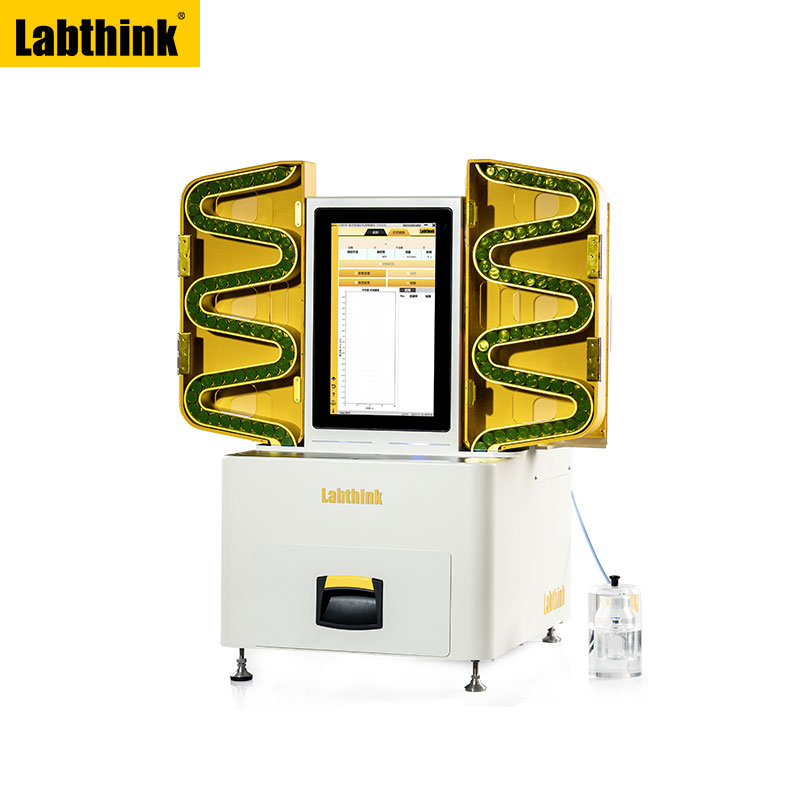CCIT for Small Volume Pharmaceutical Primary Packaging Containers
Introduction
In the pharmaceutical industry, Container Closure Integrity Testing (CCIT) is essential to ensure that primary packaging containers such as ampoules, vials, prefilled syringes, and cartridges maintain a sterile barrier against contaminants. Any breach in container integrity can compromise product sterility, leading to drug degradation, contamination, and regulatory non-compliance.
For small-volume pharmaceutical containers, CCIT methods must be highly sensitive, reliable, and non-destructive, especially when dealing with liquid or lyophilized drugs. This article explores advanced CCIT techniques suitable for small-volume pharmaceutical packaging and highlights cutting-edge solutions such as Labthink’s non-destructive leak testing technology.
Why CCIT is Critical for Small-Volume Containers?
Small-volume pharmaceutical containers are highly sensitive and require precise packaging integrity to:
- Ensure Drug Sterility: Prevent microbial contamination that could affect patient safety.
- Maintain Drug Stability: Avoid oxidation, moisture ingress, or gas exchange that could alter the drug’s composition.
- Comply with Regulations: Meet regulatory requirements from USP <1207>, FDA, EU GMP Annex 1, and ISO 11040-4 for injectable packaging.
- Improve Product Shelf Life: Prevent premature drug degradation due to environmental exposure.
Common CCIT Methods for Small-Volume Pharmaceutical Containers
1. Vacuum Decay Testing (Non-Destructive)
Principle: Measures pressure changes in a vacuum chamber to detect microleaks.
Advantages:
✅ Non-destructive, preserving sample integrity.
✅ High sensitivity (detects leaks as small as 5 μm).
✅ Compliant with USP <1207>.
Best for: Ampoules, vials, syringes, and cartridges.
2. High Voltage Leak Detection (HVLD)
Principle: Uses high-voltage electrical conductivity to detect leaks in non-conductive containers with conductive liquids.
Advantages:
✅ Detects microscopic pinholes and cracks.
✅ Ideal for liquid-based formulations.
✅ Non-invasive and non-contact method.
Best for: Prefilled syringes, glass ampoules, and vials.
3. Helium Leak Detection
Principle: Uses helium gas as a tracer to identify leaks at an extremely fine level.
Advantages:
✅ Ultra-sensitive detection (sub-micron leaks).
✅ Ideal for extremely critical packaging applications.
✅ Meets stringent pharmaceutical industry standards.
Best for: High-value biologics and vaccines.
4. Laser-Based Headspace Gas Analysis
Principle: Measures changes in oxygen, carbon dioxide, or moisture levels inside a sealed container.
Advantages:
✅ Non-invasive and provides quantitative results.
✅ Detects gas leakage without damaging samples.
✅ Suitable for lyophilized drugs and oxygen-sensitive formulations.
Best for: Freeze-dried vials, sterile injectables, and biologics.
Labthink’s Non-Destructive CCIT Solutions for Small-Volume Containers
Labthink offers state-of-the-art non-destructive leak detection technology, such as the C690H Leak Detection System, which applies vacuum decay testing for:
- Small-volume ampoules, vials, and syringes
- Microleak detection without sample destruction
- Fast, automated, and repeatable testing
- Compliance with regulatory requirements
Conclusion
Container Closure Integrity Testing (CCIT) is vital for small-volume pharmaceutical primary packaging to ensure drug sterility, stability, and regulatory compliance. Advanced techniques such as vacuum decay, HVLD, and helium leak detection offer precise and non-destructive testing solutions.
Labthink’s advanced CCIT solutions provide reliable, high-sensitivity leak detection for pharmaceutical manufacturers, ensuring the highest level of packaging integrity for injectable and biologic products.



